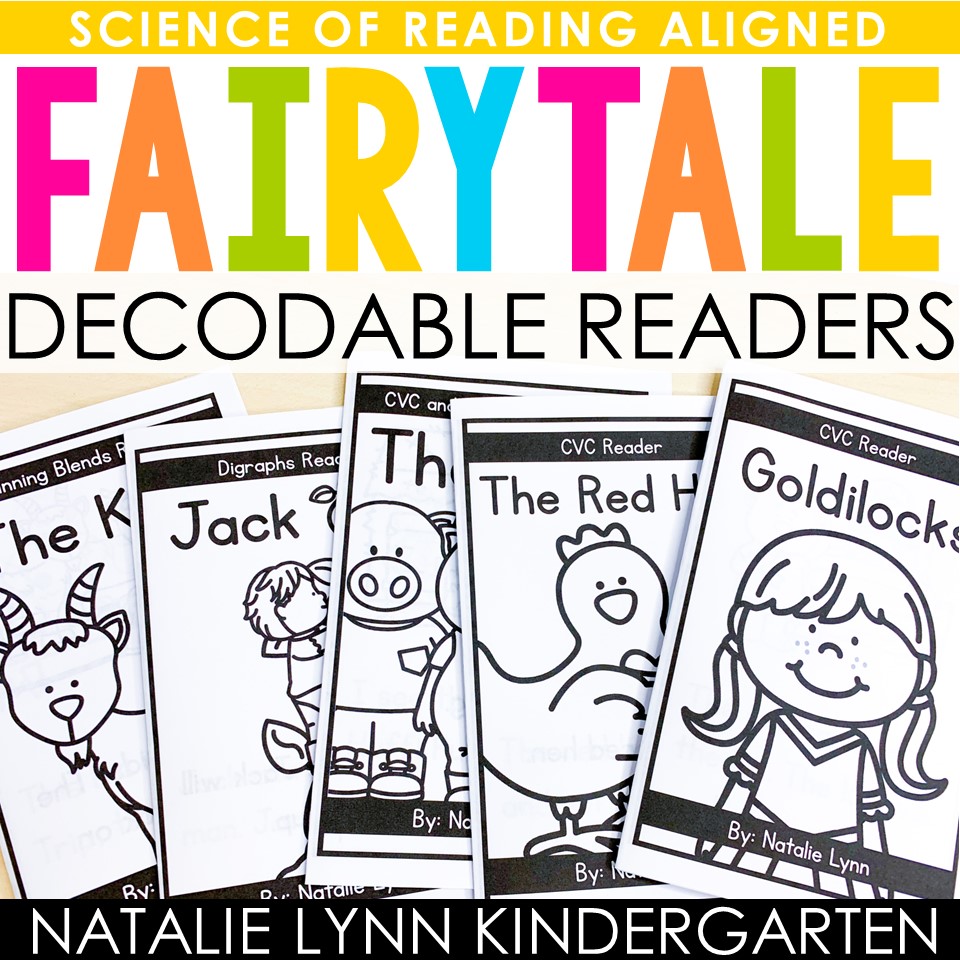
In this blog post: Download a set of decodable readers based on your favorite fairytales and folktales including The Little Red Hen, The Three Little Pigs, Goldilocks and the Three Bears, Jack and the Beanstalk, and The Three Billy Goats Gruff.
If you’ve been around for a while, you know that one of my favorite things is debunking the idea that decodable readers can’t be thematic or fun.
When someone suggested that in order to use decodable readers in my kindergarten classroom I had to sacrifice finding books to fit our weekly and monthly themes, I took that as a challenge. Who says we can’t have thematic decodable books? Definitely not me!
Recently, one of the amazing teachers in our teacher community requested fairytale decodable readers to match some favorite classic tales and fables. Challenge accepted!
This set of free fairytale and folktale decodable readers follow along with 5 classic tales: The Little Red Hen, The Three Little Pigs, Goldilocks and the Three Bears, The Three Billy Goats Gruff, and Jack and the Beanstalk.
You can add these free fairytale decodables into your fairy tales unit or use them along with the Kindergarten sub plans!
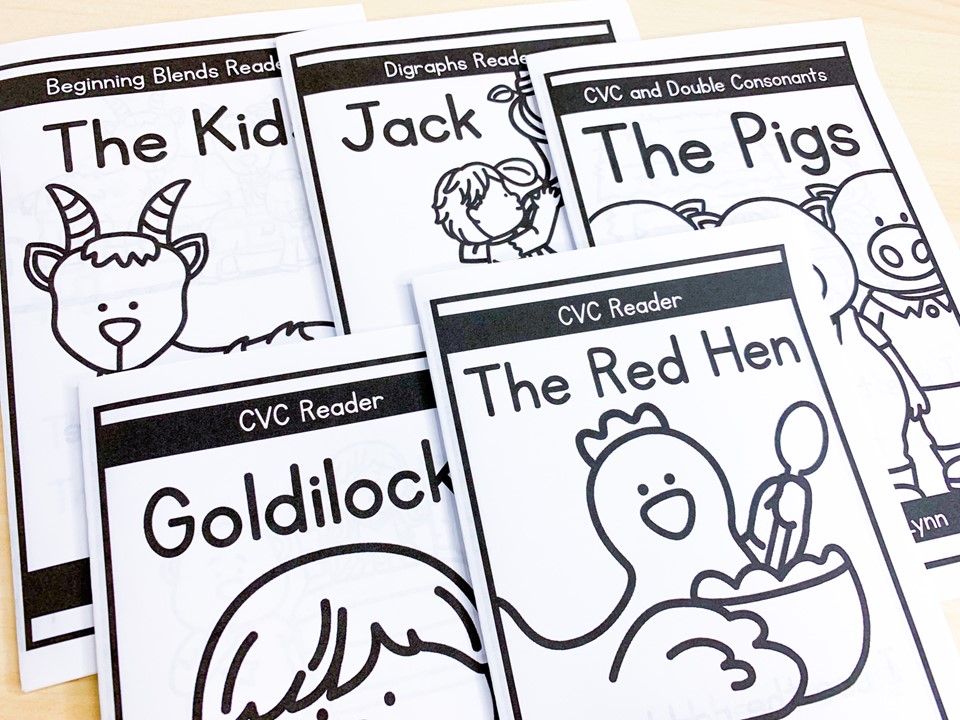
What are decodable readers?
Decodable readers are simple beginning readers that focus on specific phonics skills. These books are designed to be easily read by beginning readers because they only contain phonics patterns that have been taught and limited sight words.
This set of free fairytale decodable readers focuses mostly on CVC words, which makes them perfect for Pre-K and Kindergarten. There is also a digraphs reader and a beginning blends reader included for students who are ready.
Decodable readers vs. emergent readers
Do you already have a set of printable fairytale books for your classroom? These are most likely emergent readers.
Both decodable readers and emergent readers are written with beginning readers in mind, but there are some key differences.
While decodable readers use only decodable words and limited sight words, emergent readers tend to have a variety of words which might not be decodable for young students. Instead, students are expected to use picture clues and other strategies to “read” the story.
Emergent readers also often use patterned sentences or very short and simple sentences. Decodable readers are also short, but they are not patterned so students have to focus fully on the text.
If you are following a Science of Reading approach in your classroom, you will want to use decodable readers (unless your students are already fluent readers).
Free fairytale and fable decodable readers
Now let’s take a closer look at the five free fairytale and fable decodable readers (try saying that five times fast!).
These decodables were written with the expectation that students would be familiar with the classic tales, so I would use these books in your small groups or whole group sometime after reading the real fairy tale whole group.
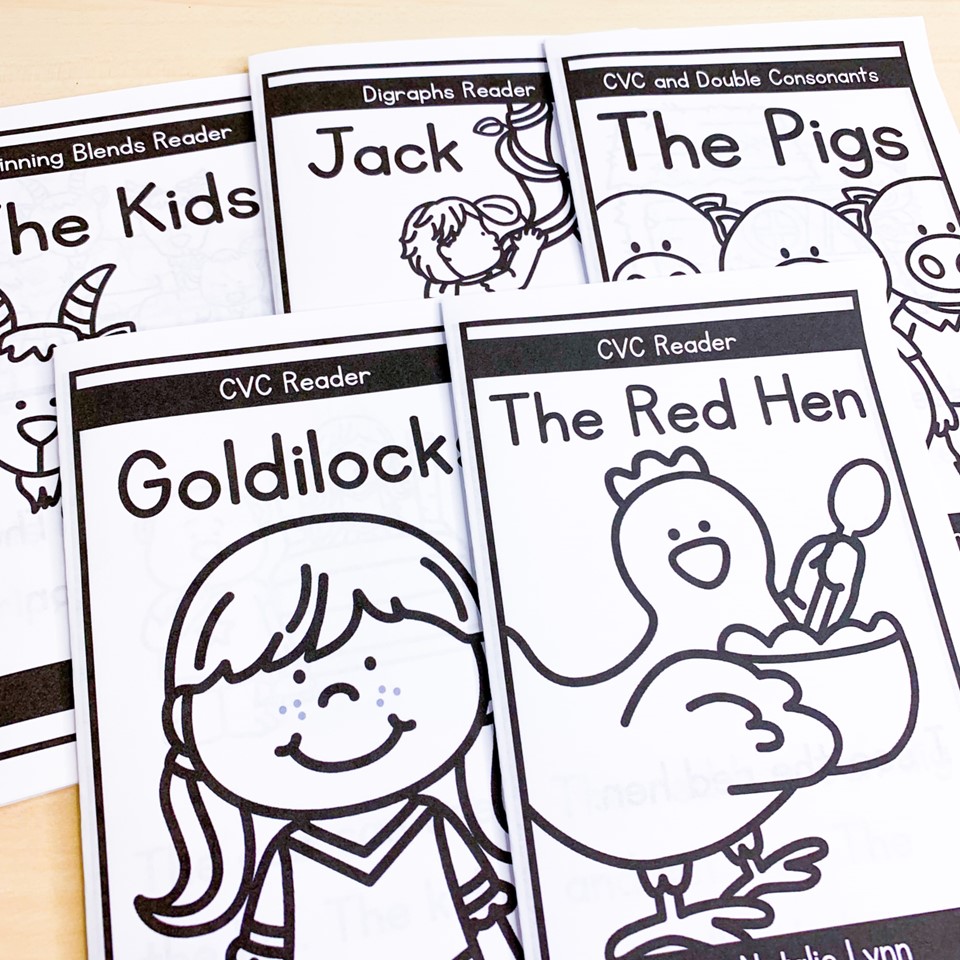
The books included are:
- The Red Hen [The Little Red Hen]
- The Pigs [The Three Little Pigs]
- Goldilocks [Goldilocks and the Three Bears]
- The Kids [The Three Billy Goats Gruff]
- Jack [Jack and the Beanstalk]
Each book includes a version with pictures and a version without pictures. For the version without pictures, cut and paste pictures are included so students can match them to each page after reading. This is a great way to get students focusing on the text and working on comprehension!
There are also two versions for easy prep. For less paper, you can use the print and fold version which uses two pieces of paper printed double-sided.
If you are like me and never want to fold another book as long as you live, there are also easy staple and cut versions! For these, you can print the books stapled and then just chop in half.
The Little Red Hen
The Red Hen is the decodable retelling of The Little Red Hen. Students will read about the red hen as she goes through the steps to plant, cut, thresh, and bake – with no help from the cat, dog, or pig. This is a CVC words decodable reader, which means you will only see CVC words.
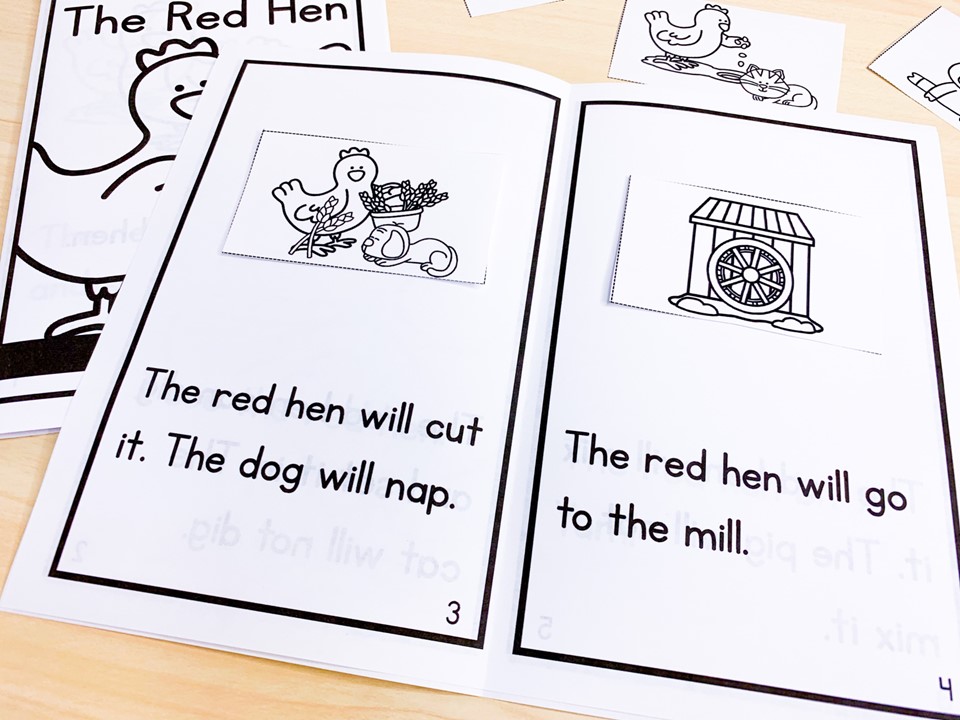
If you have students who need a little more support, the version of the book with pictures is a great option. Students will still be able to work on decoding and fluency, but the pictures just give them some extra support as they are reading.
Are your students ready to focus more on comprehension – or just rely a little too much on the text? Use the version without pictures!
The first time students read the story, the pages will be blank. This means that students will have to focus fully on the words.
After reading, students will match the pictures to each page and glue on. Then they can add these to back boxes or send home to read with families.
The Three Little Pigs
The Pigs is the decodable retelling of The Three Little Pigs. This story follows the three pigs as the big, bad wolf blows down each house. This book contains CVC words and double consonant words (huff, puff, etc.).
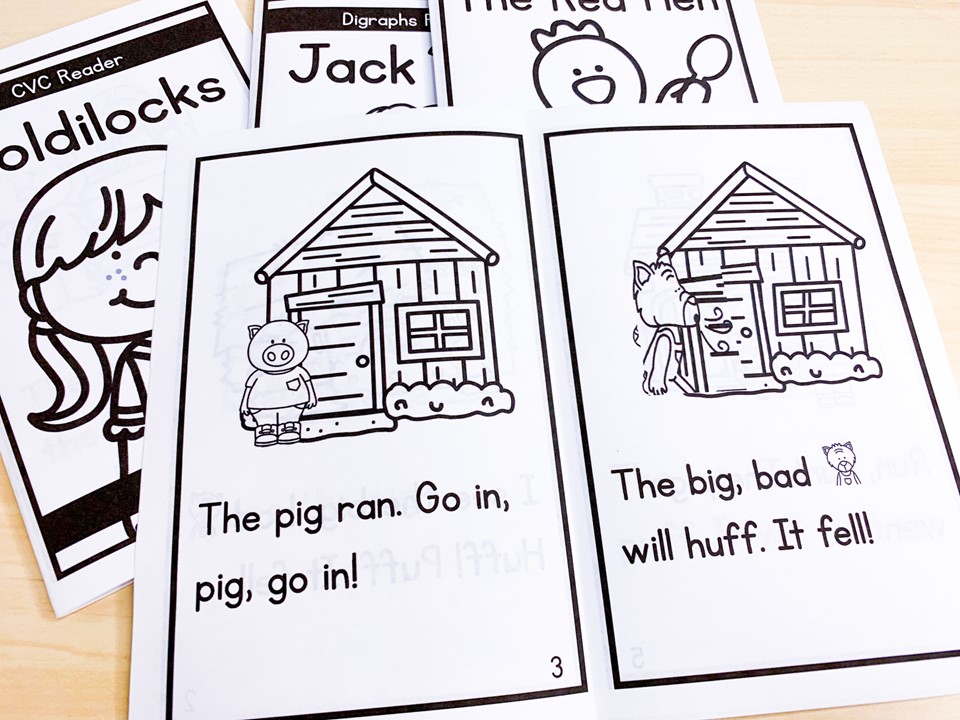
This is the only story that uses a picture within the text (for the wolf). I try not to do this often, but sometimes it just makes sense for a stronger story!
Goldilocks and the three bears
Goldilocks is the retelling of… Goldilocks! Don’t worry, the word “Goldilocks” doesn’t actually appear in the text. This book is also a CVC words reader.
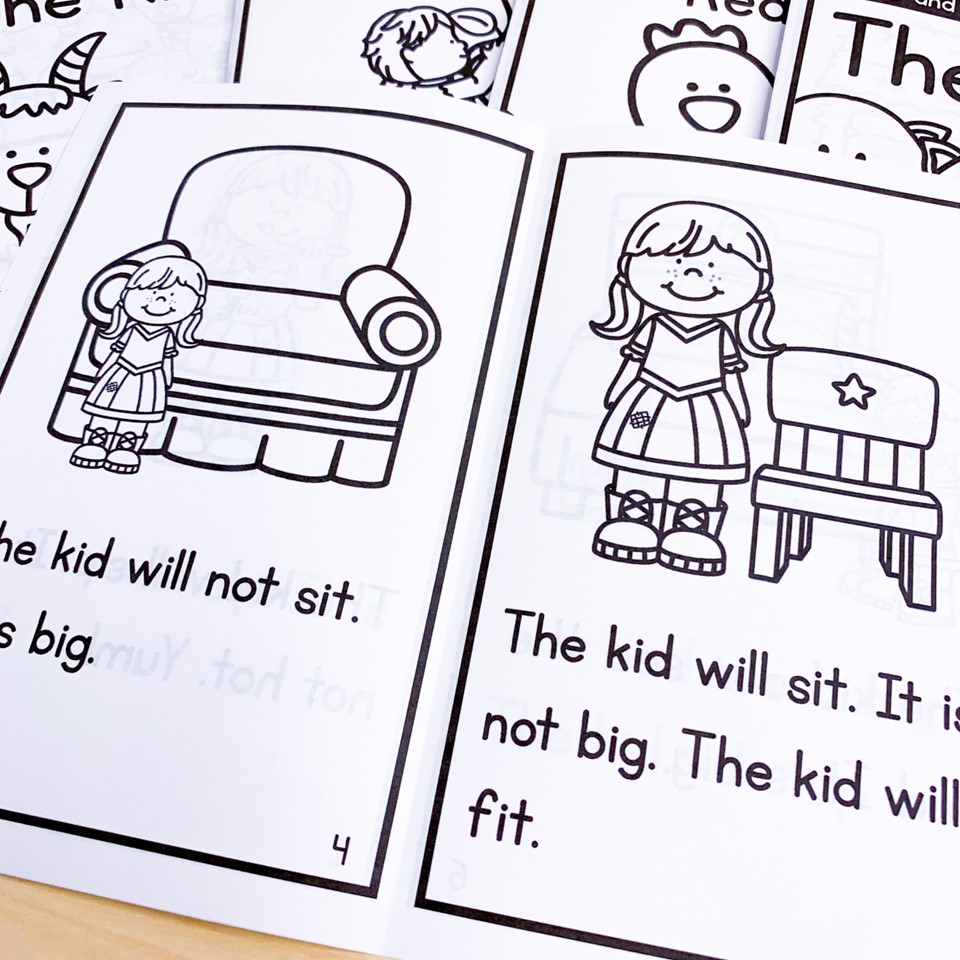
In order to fit the entire Goldilocks tale, I had to make this book a little longer. It is a full 8 pages. But no worries, it still prints double-sided beautifully!
The Three Billy Goats Gruff
The Kids is the retelling of The Three Billy Goats Gruff. This fairy tale decodable reader is a great way to introduce the vocabulary word “kid” for a young goat! In fact, the print and fold version has a spot on the back for you to introduce the word.
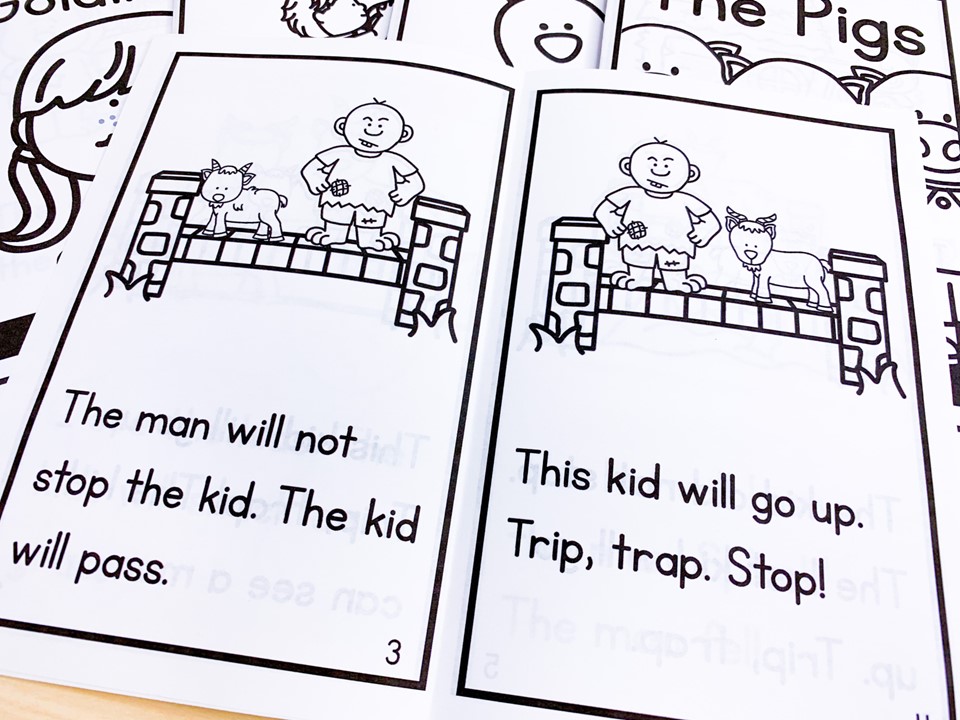
This book has CVC words and blends. I will say, the version without pictures is a little more difficult in this one unless you are paying attention to the size of the goats! Definitely use these one after reading the story whole group or point out the sizes to students before they sequence and match the cards.
Jack
Jack and the retelling of Jack and the Beanstalk. Students will follow Jack’s journey up the beanstalk until he is found out by the giant.
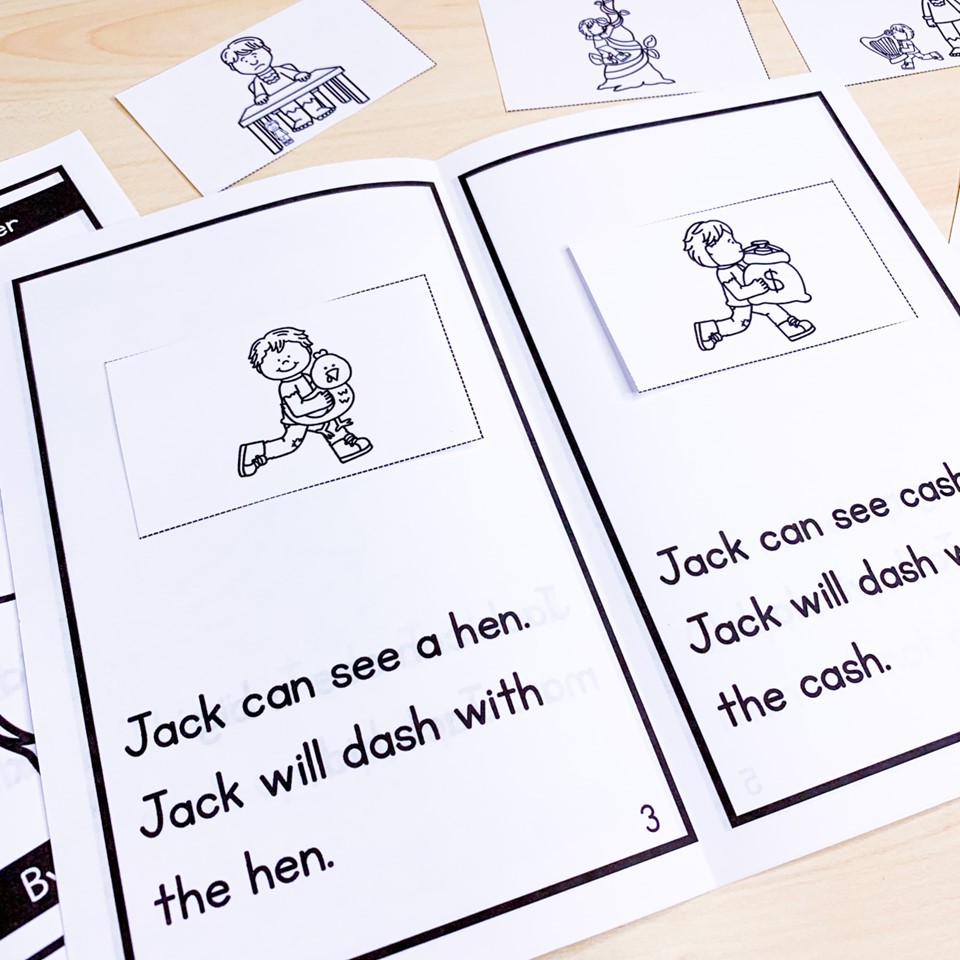
This fairy tale decodable reader uses CVC words and digraphs. With a name like Jack, it was just meant to be!
Grab your free fairy tale decodable readers
Ready to add these free fairytale and fable decodable readers to your teacher tool kit? Your students are going to love them! Just enter your email below to get them sent straight to your inbox:
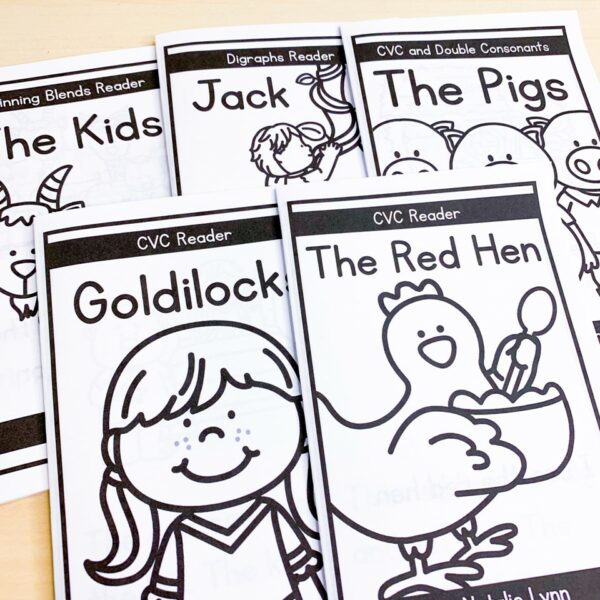
Do you love free stuff?
Fairytale Decodable Readers
Grab this set of 5 fairytale decodable readers perfect for Kindergarten!
TROUBLESHOOTING: Don’t see the free fairytale and fable decodable readers in your inbox?
- Make sure that your email was spelled correctly.
- Make sure you use a personal gmail account for best deliverability. School district accounts often block emails with outside downloads.
- Check your spam and promotions folders.
Fairy Tale Activities
Looking for hands on and meaningful fairytale activities for your class? Check out the Pre-K Literacy Unit 4: Tales From My World. Don’t let the pre-K fool you – these activities are differentiated to work well for preschool through Kindergarten.
This fairytales literacy unit uses the interactive read aloud model to focus on one fairy tale each week. You will read the story each day and focus on comprehension skills like characters, retelling, sequencing, problem and solution, and more.
Each week focuses on two vocabulary words to build oral language and background knowledge. Each day you will complete a short activity to build students’ vocabulary.
Original fairytale poems are included for each story! These were so much fun to write, and I think your students will love them as well.
Each week also includes activities to extend the learning including gross motor activities, fine motor activities, art and crafts, science and exploration, and social emotional learning.
Want to learn more about the Science of Reading? Check out these blog posts:
What is the Science of Reading?
Can Guided Reading Work with the Science of Reading?
What Does a Pre-Readers Lesson Plan Look Like?
Why Your Reading Strategies Don’t Work (And What to Do Instead)

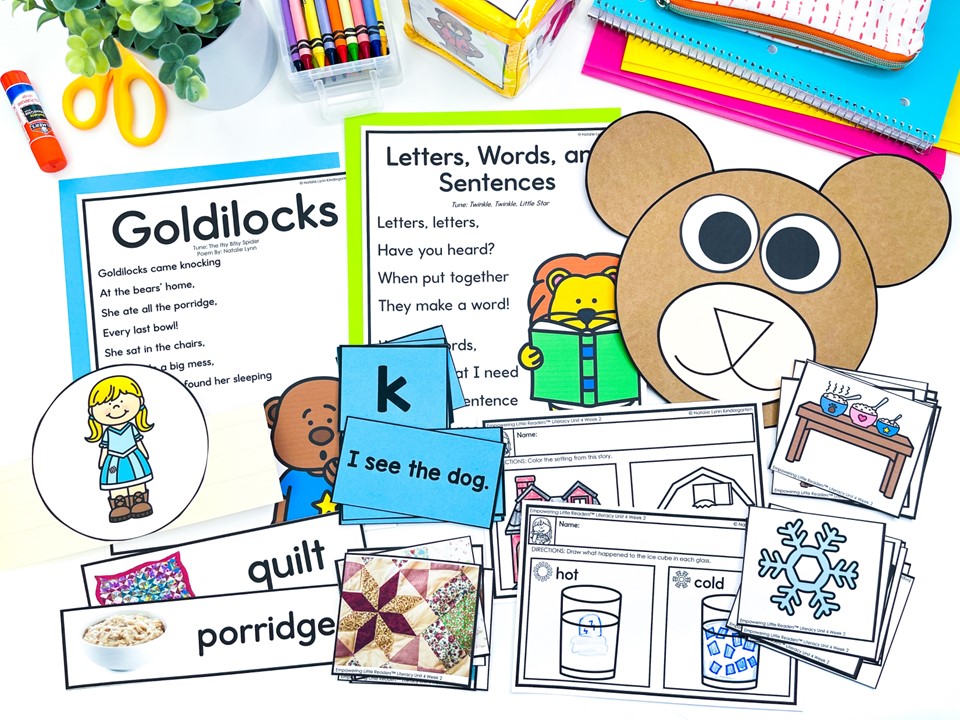
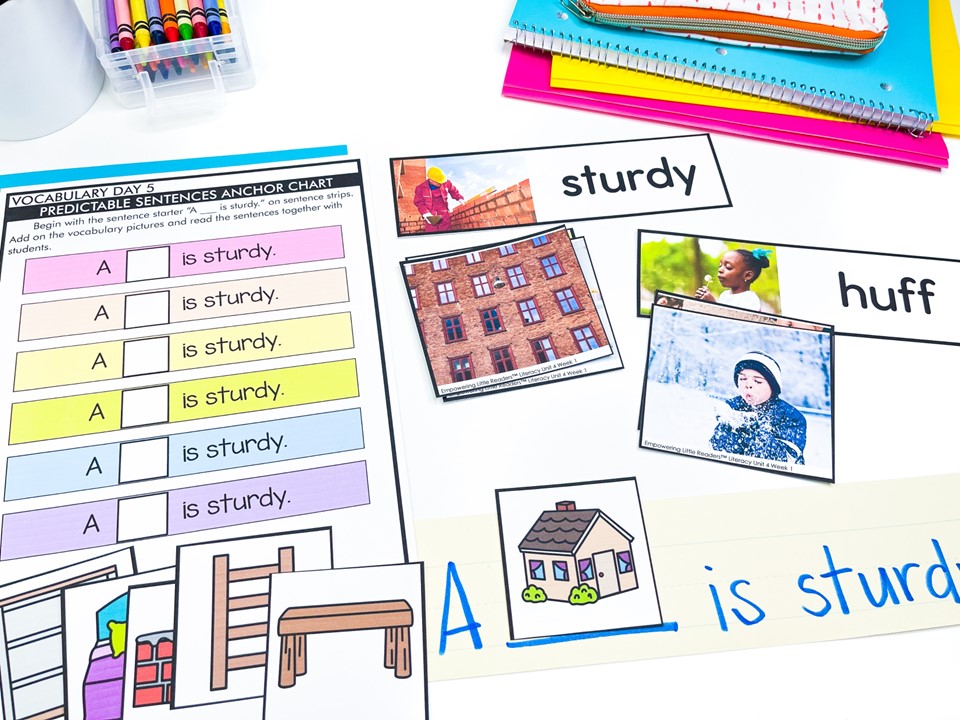
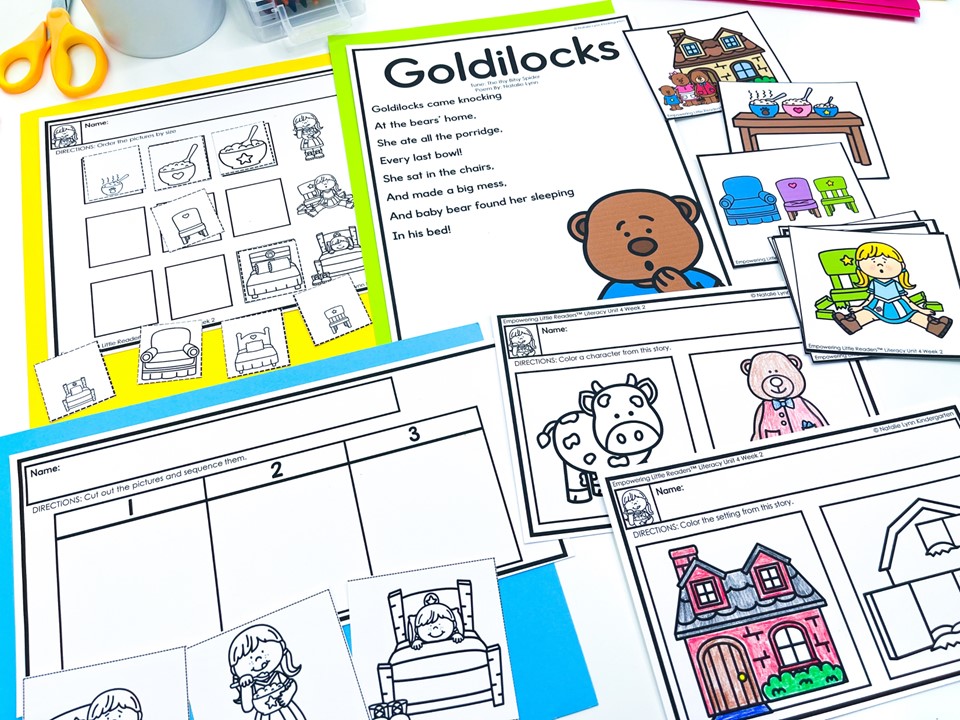


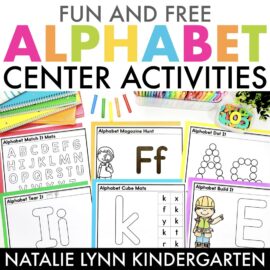
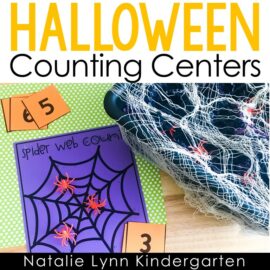
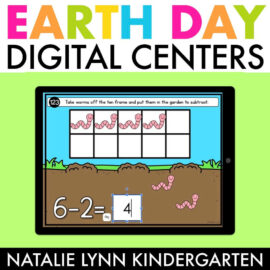

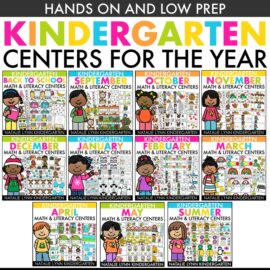
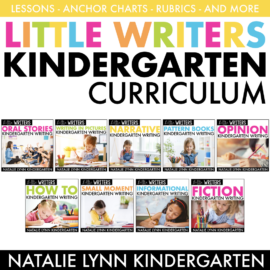
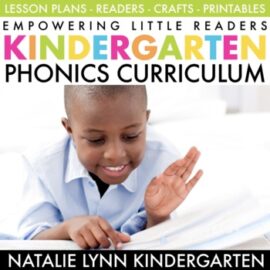
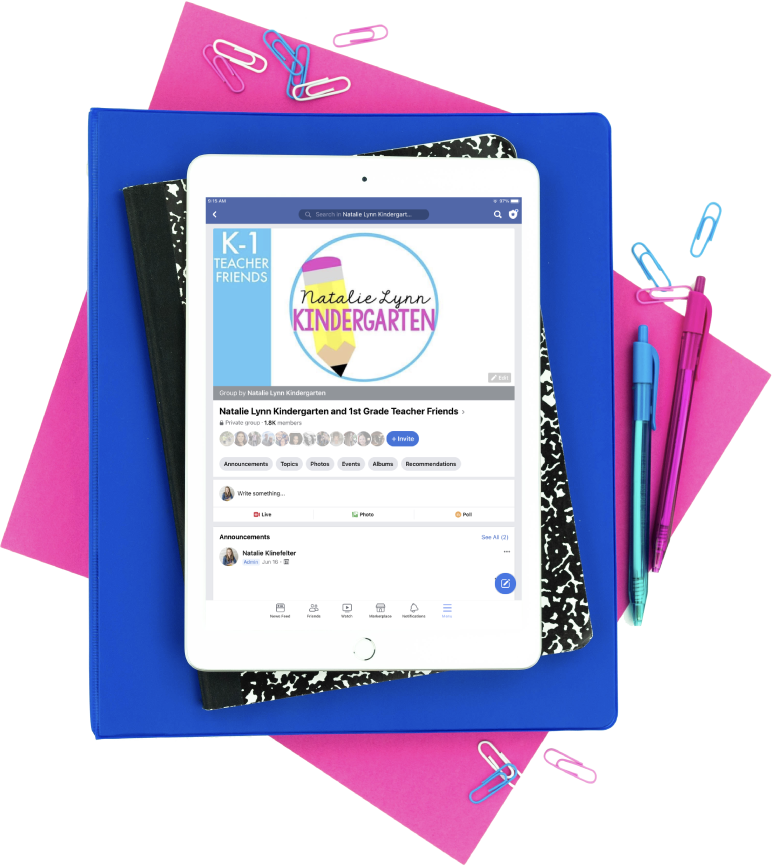

I love your resources. SOR is not used in my school, but I am trying my best to use it whenever I can.
Thank you, Michelle! I’m so glad you’re able to use these in your classroom.
look forward to using this resource
I would love to see these in my inbox! Can’t wait!
Hi Natalie! I am a PreK teacher. I am wondering if you can tell me what I could do to help students that are having trouble learning their letters and I suspect are dyslexic. I have tried multi sensory exposure.
Hi Libby! I’d love to talk more with you about this. Please feel free to email me at natalielynnkindergarten@gmail.com